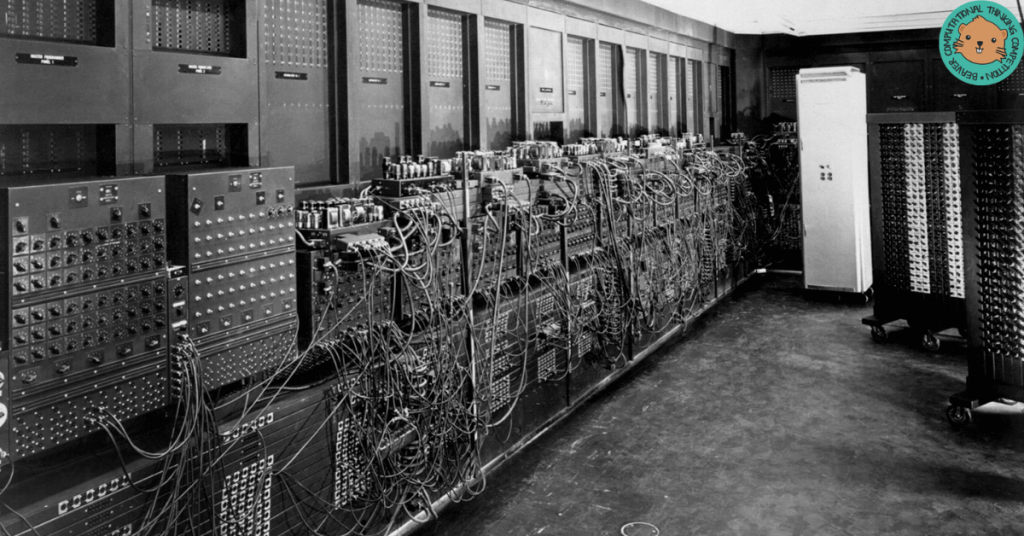Computers are used in almost every aspect of modern life, including cell phones, laptops, self-driving cars, and household appliances.
We now take how little and portable they are for granted, but this wasn’t always the case.
The very first computer was a vast, almost 27-ton monster!
You May Also Like: 10 Computer Facts That Will Leave You Speechless!
Table of Contents
The Birth of ENIAC

The Electronic Numerical Integrator and Computer (ENIAC) was developed in 1945 by two engineers, John Mauchly, and J. Presper Eckert.
The United States Army funded the project, which needed a machine that could perform complex calculations quickly and accurately to help with military operations.
The Size and Weight of ENIAC

The size and weight of ENIAC were genuinely staggering.
It took up an entire room; it was 8 feet tall, 3 feet deep, and 80 feet long.
ENIAC weighed over 27 tons, equivalent to several giant elephants’ weight!
How ENIAC Worked

ENIAC comprised 17,468 vacuum tubes, 70,000 resistors, 10,000 capacitors, and around 5 million hand-soldered joints.
It used punch cards to input data and had a speed of about 5,000 additions per second.
By comparison, today’s laptops can perform billions of operations per second!
ENIAC's Impact

Despite its massive size and weight, ENIAC was a technological breakthrough that paved the way for modern computing.
It was the first computer to be fully programmable, which means it could be reprogrammed to perform different tasks.
ENIAC was also used to calculate the trajectory of ballistic missiles, helping the United States win World War II.
The first computer was a massive machine that weighed over 27 tons!
ENIAC was a groundbreaking invention that revolutionized computing and helped the United States win World War II.
Although it may seem primitive by today’s standards, it was a remarkable achievement that paved the way for the computers we use today.
To access relevant information, check out the following blogs:
- Kangaroo Math Blog for Mathematics
- Kancil Science Blog for Science
- Beaver Computational Thinking Blog for Computer Science
- Kijang Economy Blog for Economics




